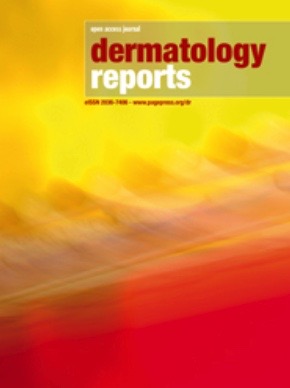Report on Artificial Sweeteners and Non-Communicable Disease Risk in the Context of SDG 3
Executive Summary
This report analyzes recent research findings on the health impacts of artificial sweeteners, with a specific focus on their association with type 2 diabetes, a major non-communicable disease (NCD). These findings are critically relevant to the United Nations Sustainable Development Goal 3 (SDG 3), which aims to ensure healthy lives and promote well-being. A longitudinal study indicates that regular consumption of artificially sweetened beverages is linked to a significantly higher risk of developing type 2 diabetes, challenging their common perception as a healthy alternative to sugar and complicating public health strategies aimed at achieving SDG 3 targets.
Key Research Findings
A study conducted by researchers in Australia and the Netherlands provides critical data on the consumption of sweetened beverages. The primary findings are as follows:
- Study Cohort: The research was based on data from 36,608 Australian participants aged between 40 and 69.
- Observation Period: Health records were monitored for an average of 14 years.
- Primary Association: Daily consumption of a single can of artificially sweetened soft drink was associated with a 38 percent higher risk of developing type 2 diabetes compared to infrequent consumption.
- Comparative Risk: The observed risk for artificially sweetened drinks (38%) was higher than the 23 percent increased risk associated with sugar-sweetened beverages.
- Influence of Body Weight: After adjusting for body weight, the link between sugary drinks and diabetes risk was nullified, suggesting the association was driven by weight gain. However, the increased risk associated with artificial sweeteners remained significant, indicating an independent mechanism.
Implications for Sustainable Development Goal 3: Good Health and Well-being
The study’s conclusions have direct and significant implications for achieving SDG 3, Target 3.4, which calls for a one-third reduction in premature mortality from non-communicable diseases by 2030. The promotion of artificial sweeteners as a tool for NCD prevention may be counterproductive.
- Undermining NCD Prevention: If artificial sweeteners contribute to the incidence of type 2 diabetes, their widespread use could undermine global efforts to control the NCD epidemic, a core component of SDG 3.
- Need for Informed Public Health Messaging: The marketing of these products as “healthier” may mislead consumers and detract from effective health promotion. Achieving SDG 3 requires clear, evidence-based guidance on diet and lifestyle.
- Re-evaluating Prevention Strategies: The findings suggest that simplistic substitution strategies (e.g., replacing sugar with sweeteners) are insufficient for NCD prevention and may introduce unforeseen health risks.
Potential Mechanisms and Further Research
While the study demonstrates a strong association, it does not establish direct causation. Researchers propose several potential mechanisms that require further investigation to fully understand the link and its relevance to SDG 3 health targets.
- Metabolic Disruption: Certain sweeteners, like aspartame, have been shown to trigger an insulin response similar to sugar, potentially interfering with blood sugar regulation over time.
- Gut Microbiome Alteration: Other sweeteners are known to disrupt the balance of gut bacteria, which can increase glucose intolerance and metabolic dysfunction.
- Cumulative Health Risks: Previous research has also associated artificial sweeteners with risks to brain and heart health, reinforcing the need for a comprehensive assessment of their impact on overall well-being as envisioned by SDG 3.
Policy Recommendations and Alignment with SDG 12: Responsible Consumption
The research calls for a re-evaluation of public health policies concerning sweetened beverages. These recommendations align with both SDG 3 and SDG 12 (Responsible Consumption and Production), particularly Target 12.8, which emphasizes ensuring people have the information necessary for sustainable lifestyles.
- Expand Policy Scope: Public health measures, such as taxes and regulations, should not be limited to sugar-sweetened beverages but should adopt a broader approach to reducing the consumption of all non-nutritive beverages.
- Enhance Consumer Awareness: To support responsible consumption (SDG 12), public health campaigns must educate consumers on the potential health hazards of artificial sweeteners, enabling informed choices that promote long-term health.
- Promote Responsible Marketing: Future policies should address the marketing of artificially sweetened products to ensure claims of health benefits are scientifically substantiated and do not mislead the public.
Which SDGs are addressed or connected to the issues highlighted in the article?
-
SDG 3: Good Health and Well-being
The article directly addresses health issues, specifically the link between the consumption of artificial sweeteners and the increased risk of developing type 2 diabetes, a major non-communicable disease (NCD). The entire focus is on a health risk associated with a common dietary product, which falls squarely under the goal of ensuring healthy lives and promoting well-being.
What specific targets under those SDGs can be identified based on the article’s content?
-
Target 3.4: By 2030, reduce by one-third premature mortality from non-communicable diseases through prevention and treatment and promote mental health and well-being.
The article’s core subject is the prevention of a non-communicable disease. It highlights research that identifies a significant risk factor (consumption of artificially sweetened drinks) for type 2 diabetes. The article states that drinking one can a day “was associated with a 38 percent higher risk of developing type 2 diabetes.” By raising awareness of this risk, the research contributes to prevention efforts aimed at reducing the incidence and, ultimately, the mortality associated with this NCD.
-
Target 3.d: Strengthen the capacity of all countries… for early warning, risk reduction and management of national and global health risks.
The research study described in the article is a clear example of an activity that strengthens the capacity for health risk reduction. The study, conducted in Australia, gathers “as much data as possible on potential risks” associated with artificial sweeteners. The researchers’ call to “raise awareness of the possible health hazards of artificial sweeteners” is a direct effort to manage a national health risk by informing the public and policymakers.
Are there any indicators mentioned or implied in the article that can be used to measure progress towards the identified targets?
-
Risk of developing type 2 diabetes
The article explicitly provides quantitative data on the increased risk of developing diabetes. This can be used as a direct indicator to measure the health impact of certain consumption patterns. The article specifies a “38 percent higher risk” for consumers of artificially sweetened drinks and a “23-percent increase in diabetes risk” for consumers of sugar-sweetened drinks.
-
Prevalence of sweetened beverage consumption
The article implies this indicator by focusing on the health effects of “drinking just a single can of artificially sweetened soft drink a day.” Tracking the per capita consumption of both artificially sweetened and sugar-sweetened beverages would be a key indicator for measuring exposure to this identified risk factor within a population.
-
Prevalence of overweight
This is an implied indicator. The article mentions that when “body weight was factored in, the link between sugary drinks and type 2 diabetes disappeared – suggesting being overweight was driving that particular association.” This highlights that the prevalence of overweight individuals in a population is a critical indicator to monitor in conjunction with diabetes risk.
Table of SDGs, Targets, and Indicators
| SDGs | Targets | Indicators |
|---|---|---|
| SDG 3: Good Health and Well-being | Target 3.4: Reduce premature mortality from non-communicable diseases (NCDs) through prevention. |
|
| SDG 3: Good Health and Well-being | Target 3.d: Strengthen capacity for early warning, risk reduction and management of health risks. |
|
Source: sciencealert.com







